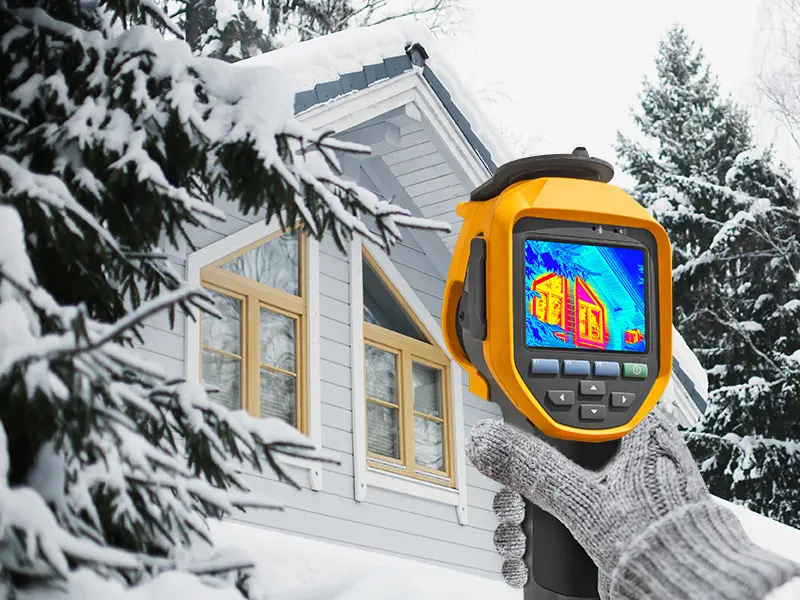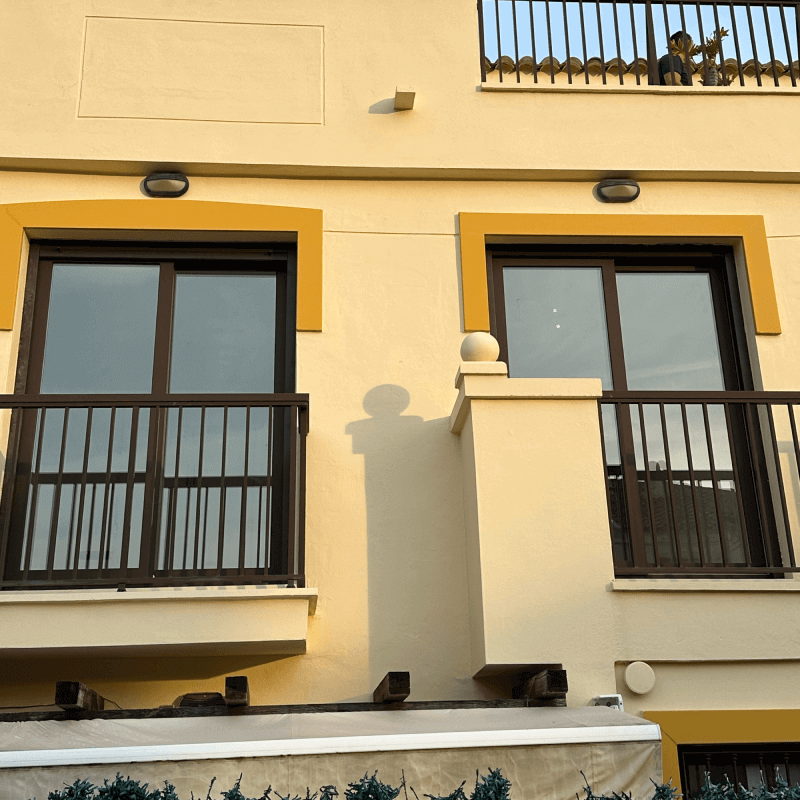Sliding vs. Casement Windows: Which to Choose for Your Home in Spain?
· María Fernández · General knowledge · 6 min read
Casement windows open like closet doors, while sliding windows slide on tracks like supermarket doors. It sounds simple, but choosing between them affects room layouts, air conditioning bills, and even home security. We’ll explore which system is right for you.
Casement Windows – A Classic That Works
Case-on-case windows are installed in 70% of Spanish homes, and this is no coincidence. When the sash is pressed against the frame along the entire perimeter, a tight seal is created that keeps out both air and street noise. In Madrid, where temperatures range from 40°C in the summer to near freezing in the winter, this tight seal saves up to 30% on heating and air conditioning.
Modern casement windows have two opening modes. The full opening mode is used for ventilation and cleaning the windows from the outside. The tilt-and-turn mode (when the window tilts at the top) is ideal for continuous ventilation—air flows up to the ceiling, there’s no draft, and the window can be left open even in the rain.
The main advantage of casement windows is their ease of repair. If the hardware starts to stick after 10 years, a technician can adjust or replace the hinges in an hour for 50-100 euros. Repairs to sliding systems are usually more complicated and expensive.
The drawback is obvious: the open sash takes up space. If the window faces a narrow balcony or is adjacent to furniture, it won’t be possible to open it fully. In the kitchen, the sash can get in the way when reaching for shelves or working at the sink. Curtains or blinds should be hung with the opening trajectory in mind.
Safety is a separate issue. Casement windows on the ground floor can easily be equipped with vandal-resistant hardware with mushroom-shaped pins that cannot be forced out from the outside. The cost of such protection is an additional €100-€150 per window, but the peace of mind is worth it.
Case-sash windows start at €200 per square meter for simple PVC systems. High-quality windows with multi-point locking and micro-ventilation cost €350-€500 per square meter.
Sliding Systems – Maximum Light and Space
Sliding windows save space and look modern. The sashes move parallel to the wall, without taking up space. This solution is suitable for small apartments, narrow balconies, and any space where every centimeter counts.
Sliding systems for terrace access are especially popular in Spain. Imagine a 4-6 meter wide glass wall that, with a single movement, transforms the living room into an extension of the garden. On summer evenings, when the temperature drops to a comfortable 25°C, this creates the perfect space for relaxation.
Modern sliding systems are divided into two types. Classic sliding windows (correderas) are more affordable but less airtight. Lift-and-slide systems (elevadoras) lower and press against the frame when closed, providing a seal almost like casement windows. The price difference is significant—elevadoras are 2-3 times more expensive.
The problem with standard sliding windows is insulation. Gaps remain where the sashes overlap, allowing dust, noise, and air to enter. In Valencia or Alicante, where winter temperatures reach 10-15°C, this isn’t a problem. But for Madrid or Zaragoza, it’s better to choose lift-and-slide systems or casement windows.
Sliding windows require regular maintenance. The tracks need to be cleaned of sand and dust every 3-4 months, especially if you live by the sea or in an area with active construction. The rollers wear out after 10-15 years and need to be replaced.
Parallel-sliding windows - a compromise solution
There’s a hybrid option - parallel-sliding windows (correderas oscilo-parallelas). They open like casement windows for ventilation, but can also slide back and forth along the wall. This solves the ventilation problem of traditional sliding systems while still saving space.
These systems are popular in new residential complexes in Barcelona and Madrid. They are more expensive than traditional sliding windows (starting at €600 per square meter), but cheaper than high-quality lift-and-slide systems. The main drawback is the complex hardware, which may require expensive repairs after 10-12 years.
What to choose for different rooms
Bedrooms and children’s rooms are best equipped with casement windows. The tilt-and-turn function ensures safe ventilation at night, and good insulation ensures a quiet sleep. It’s important to allow for the opening of the sashes when arranging furniture.
Kitchens in small apartments often require sliding solutions. When the work surface passes under the window, a casement window will constantly get in the way. A sliding window solves this problem, although you’ll have to put up with slightly less insulation.
Living rooms with access to a terrace are ideal for large sliding systems. If your budget allows, choose lift-and-slide systems. They will ensure a tight seal in winter and create a unified space with the garden in summer.
Bathrooms are typically equipped with small casement windows with frosted glass. The tilt-and-turn function allows for constant ventilation, preventing mold.
Climate Selection Considerations
On the Mediterranean coast with its mild winters, sliding systems work well. The slight heat loss is offset by ease of use and aesthetics. The key is to choose systems with protection from salty air.
In central Spain, with its temperature contrasts, casement windows provide better insulation. If you want sliding doors to the terrace, invest in lift-and-slide systems with a thermal break.
In the north of the country with its rainy climate, water protection is critical. Casement windows cope better with this. If you choose sliding windows, be sure to check the airtightness rating—at least Class 3 watertightness is required.
Security Considerations
Sliding windows on the ground floor are more difficult to protect against burglary. They can simply be lifted and removed from their tracks. Systems with a lift lock are available, but they increase the cost by 20-30%.
Casement windows with multi-point locking and mushroom-shaped cams provide a level of security comparable to an entrance door. For added security, you can install a handle with a key or button to prevent children from opening the window on their own.
Practical Recommendations
Choose casement windows if you value maximum insulation, have ample room to open the sashes, and want to minimize maintenance costs.
Sliding systems are suitable for small spaces, modern interiors, and large openings to a terrace. Be prepared to regularly clean the tracks and possibly replace the rollers after 10-15 years.
Don’t skimp on hardware—it’s the heart of any window. High-quality mechanisms from Roto, Siegenia, or GU will last twice as long as generic equivalents and ensure smooth window operation for years.
Before making your final choice, visit a showroom and try opening and closing different window types. Pay attention to the effort, smoothness, and comfort of the handles. What seems like a small detail when you buy them can become an annoyance every day for the next 20 years.




